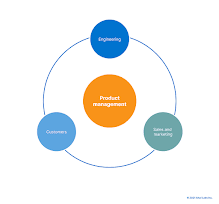Crafting Objects and Fields for Optimal Functionality | SalesForce DevOps
Introduction: In the realm of database design, creating a robust data model is crucial for organizing and managing information efficiently. One of the foundational steps in this process involves defining the objects and fields within the model. In this article, we will explore the essential aspects of crafting objects and fields to build a well-structured and functional data model. - Salesforce DevOps Online Training Institute
Understanding Objects and Fields:
Objects and fields are fundamental building blocks of a data
model. Objects represent entities, such as customers, products, or orders,
while fields define the attributes or characteristics of these entities. Think
of objects as nouns and fields as adjectives that provide specific details
about the nouns.
Identifying
Entities:
The first step in designing a data model is identifying the
entities that need to be represented. These entities could be tangible, like a
customer or a product, or intangible, such as an order or a transaction. By
clearly defining these entities, you lay the foundation for a structured and
organized data model.
Defining
Object Relationships:
Once the entities are identified, it's crucial to establish
relationships between them. Relationships define how different objects are
connected or linked in the database. For example, a customer may be associated
with multiple orders, establishing a one-to-many relationship. Understanding
and defining these relationships are essential for maintaining data integrity
and ensuring accurate information retrieval.
- Salesforce
DevOps Training in Hyderabad
Crafting Fields
for Attributes:
With entities and relationships defined, the next step is to
determine the attributes or fields for each object. Fields capture specific
information about an entity, providing a detailed view of its characteristics.
For a customer object, fields may include attributes like name, email, and
address. Each field should be carefully chosen to represent relevant details
without unnecessary redundancy.
Ensuring
Data Integrity:
Data integrity is a critical consideration when designing a
data model. It ensures that the information stored in the database is accurate,
consistent, and reliable. By establishing constraints and validations on
fields, you can prevent data inconsistencies and errors. For example, setting a
unique constraint on a customer's email field ensures that each customer has a
distinct email address.
Normalizing
the Data Model:
Normalization is the process of organizing data to reduce
redundancy and dependency, resulting in an optimized and efficient data model.
This involves breaking down large tables into smaller, related tables and
organizing fields to eliminate duplication. Normalization enhances data
consistency and simplifies database maintenance. - Salesforce
DevOps Online Training
Conclusion:
Crafting objects and fields for a data model is a meticulous
process that requires a deep understanding of the business requirements and the
relationships between different entities. By identifying entities, establishing
relationships, defining fields, ensuring data integrity, and normalizing the
data model, you can create a foundation for a robust and scalable database
system. A well-designed data model not only enhances data organization but also
contributes to improved performance, flexibility, and ease of maintenance in
the long run.
Salesforce DevOps Training in Hyderabad - Visualpath provides
best Salesforce DevOps Online Courses by real-time faculty with real time
Projects. We are Providing Salesforce DevOps Training in Ameerpet USA, UK,
Canada, Dubai, Australia. Call on +91-9989971070.




Comments
Post a Comment